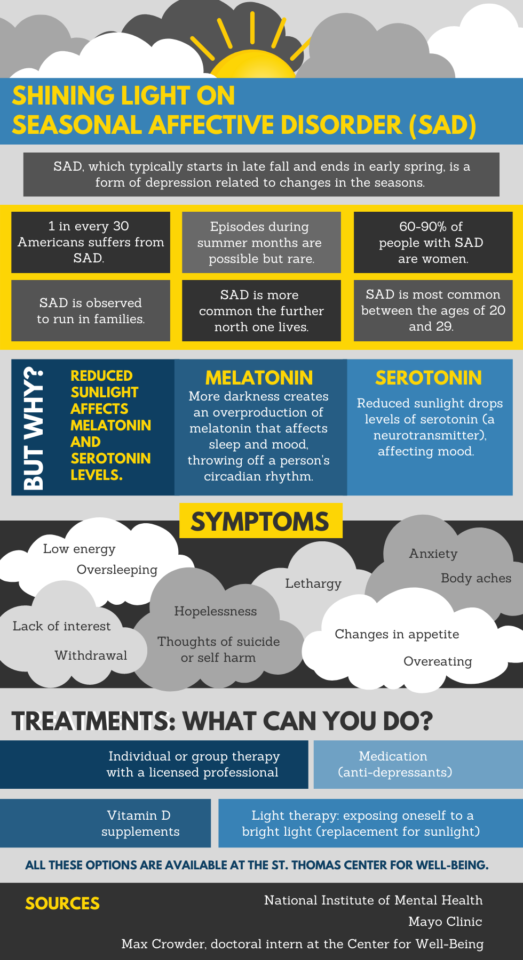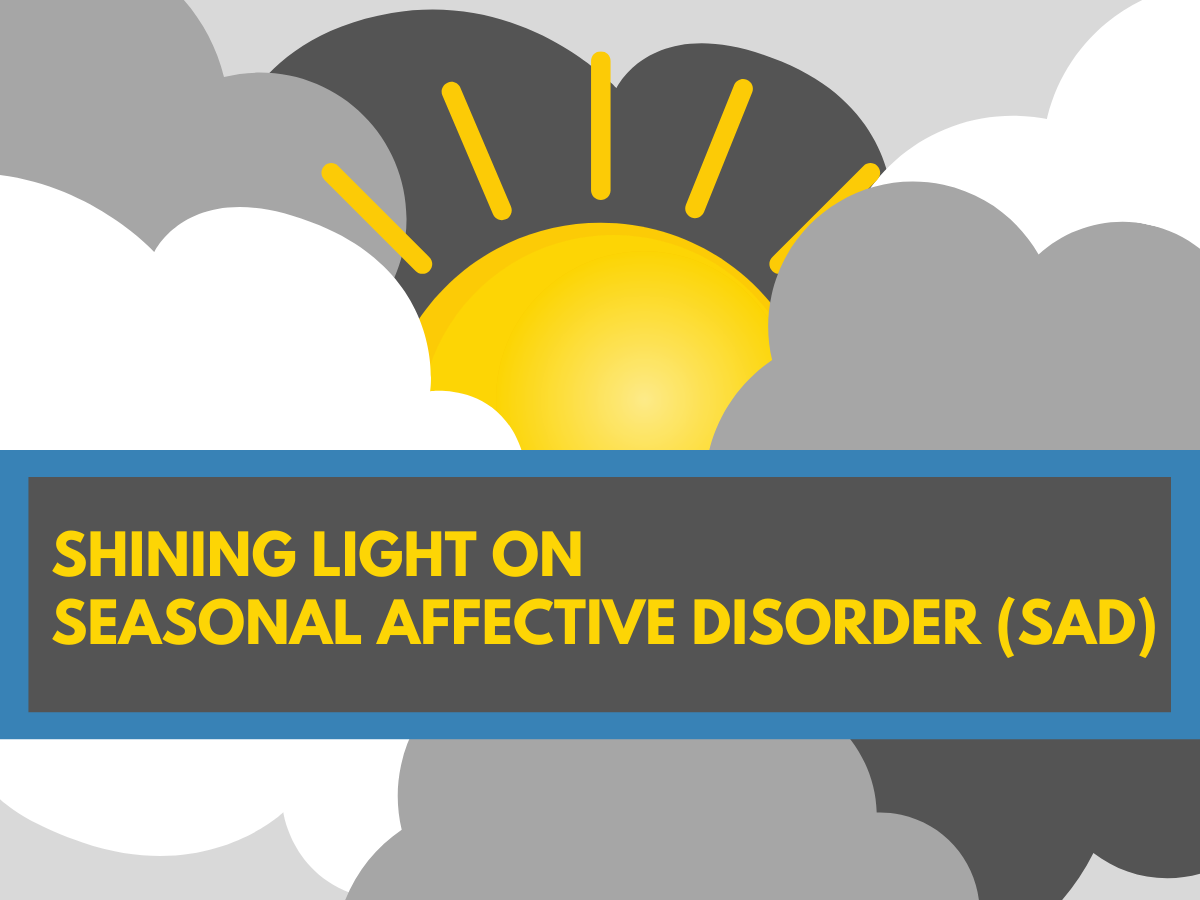
During the fall and winter months, many St. Thomas students are found in the Center for Well-Being discussing the possibility of Seasonal Affective Disorder (SAD).
Center for Well-Being Director Debra Broderick defines SAD as, “a reduction of mood, or energy, low interest in things that people are interested in, low motivation, low physical energy. All of those things, more than just being in kind of a funk or having a blue day.”
Those with SAD experience depression symptoms for about four to five months, including oversleeping, appetite change, weight gain, tiredness and low energy. These symptoms normally develop during fall or winter and sometimes last until April, which makes it easier to be diagnosed.
The history of SAD is not tied to cold weather or cloudiness, it’s tied to lack of sunlight and shortened days.
Broderick explains the disorder as, “kind of pervasive, and by pervasive I mean chronic, like every day.”
SAD gets pushed aside because students who develop any of these symptoms diagnose it as just a bad day that they can tough out on their own.
“A lot of students will brush it off to academic stress, to being very busy. Students will say, ‘when I’m not in school I’m fine, but when I’m in class I feel really depressed,’” Broderick said. “I point out when does it start, and when does it go away, and (some students will say) ‘I feel better after midterms during Spring.’ That’s when things start to coincide.”
SAD, however, is different from regular depression.
One main difference is that SAD is only effective during various months while depression is stimulated from things such as anxiety.
“Most of the time students will put off seeking help around it because they think it’s them. They think everybody else is handling it except for them. Our culture, for the most part, I think, is about ‘how I should be able to handle this on my own,’” Broderick said.
Through St. Thomas, and Broderick’s experience in the area, the Center of Well-Being sees about 1% to 5% of the student body are affected by SAD each year.
“While I think about treatment for SAD, one of the things we do encourage is to try to keep up with their normal interest and things that bring them a sense of well-being, sense of meaning, happiness, fun and all of that kind of thing,” Broderick said.
Annabelle Wiskus can be contacted at Wisk9881@stthomas.edu.


SAD lights are available for 2 hour use at each of the St. Thomas libraries.